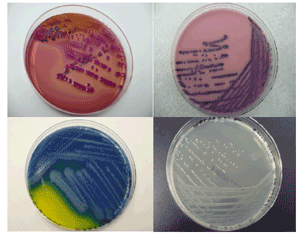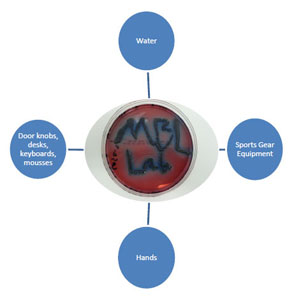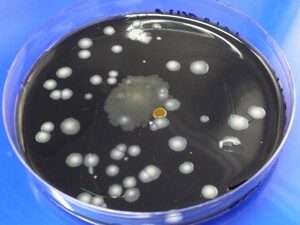Hi kids, do we look familiar to you? You could use us in your school science projects.

We are bacteria and since we are very small and can only be seen under very powerful microscopes, people call us microorganisms. The cartoons you see above show how we could look like in your imagination. one reason why you should consider us in your school science projects is that we grow very fast and hence in a short time, you’ll be done with your project.
As you use us in your science projects, remember some bacteria are good and can be beneficial to your body; some are bad and can make you very sick…
Did you know that you can find bacteria everywhere? You can find us in the air, in the soil, on your hands, clothes, shoes, on your cell phone, or computer, on the door knobs, on money, on the handles on the bus; on the animal fur… there are so many places you can find bacteria on.
When we are grown on special media in a laboratory we may look like the pictures below :

If you would be interested in growing us for your school project MBL Laboratories can help you. Explore the amazing world of bacteria growth by doing your science project at MBL.
If you are looking for an elementary, middle or high school project ideas in the life science –environmental microbiology – MBL Laboratories are ready to help you!
MBL Laboratories can help you with bacteria testing in different matrices:
If you have any other ideas on the testing for your original science project simply give us a call at 905 290 9101 (1-866-813-0648) or email us at info@moldbacteria.com. We will be more than happy to assist you.
Hey, the cartoons for the bugs above were drawn by Daniel Gaczol. We greatly appreciate his help.


